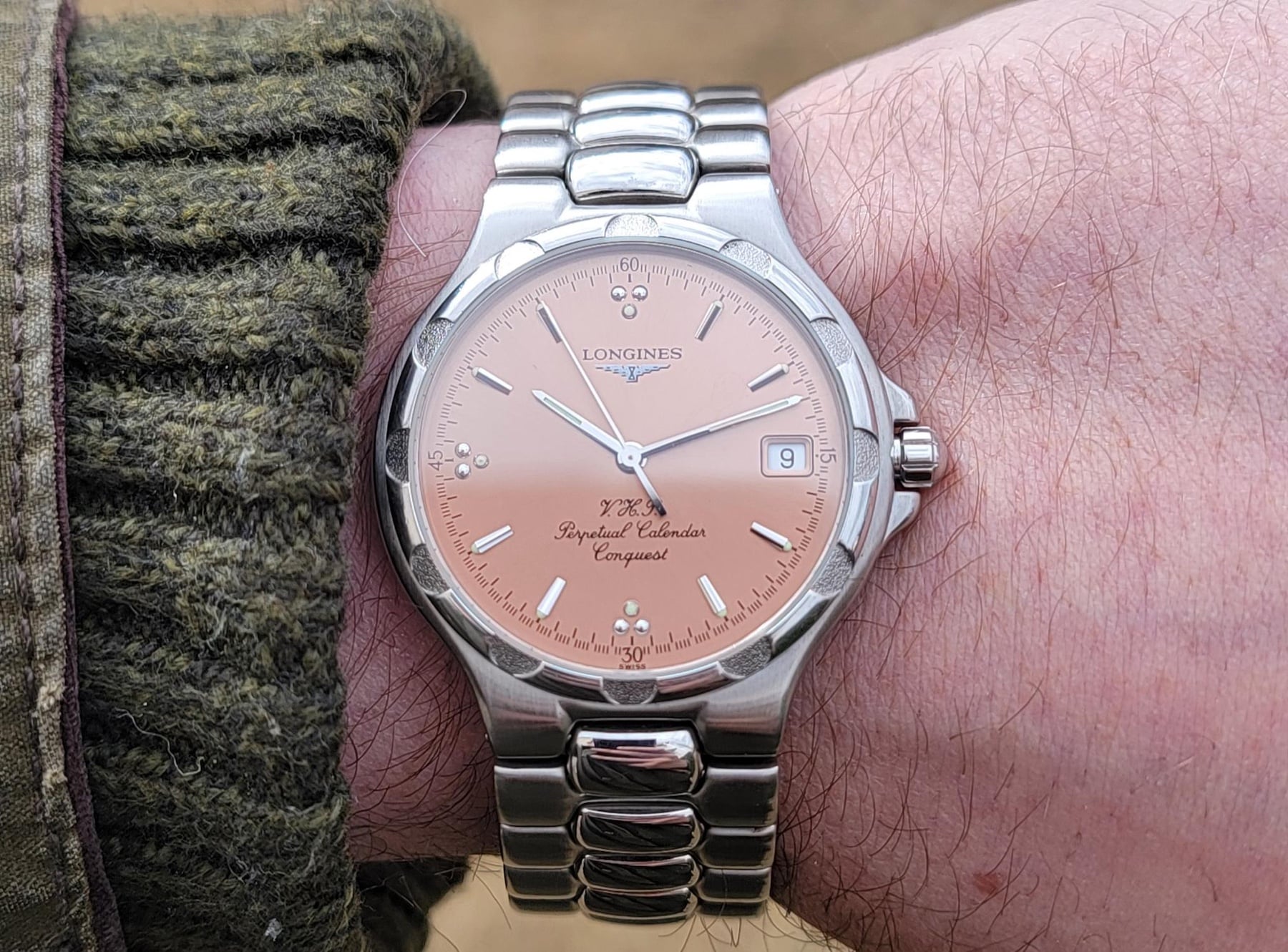The grab-and-go quartz watch is a trope in this hobby. Similar to the line of thinking that “I have to have a chronograph, and a dive watch, and a dress watch,” the grab-and-go quartz is there to fill a niche, one which relegates the quartz watch to one of last resort. It’s a grudging admission of the functional superiority of the movement type, but doesn’t give it the dignity of something you would choose, if you had time.
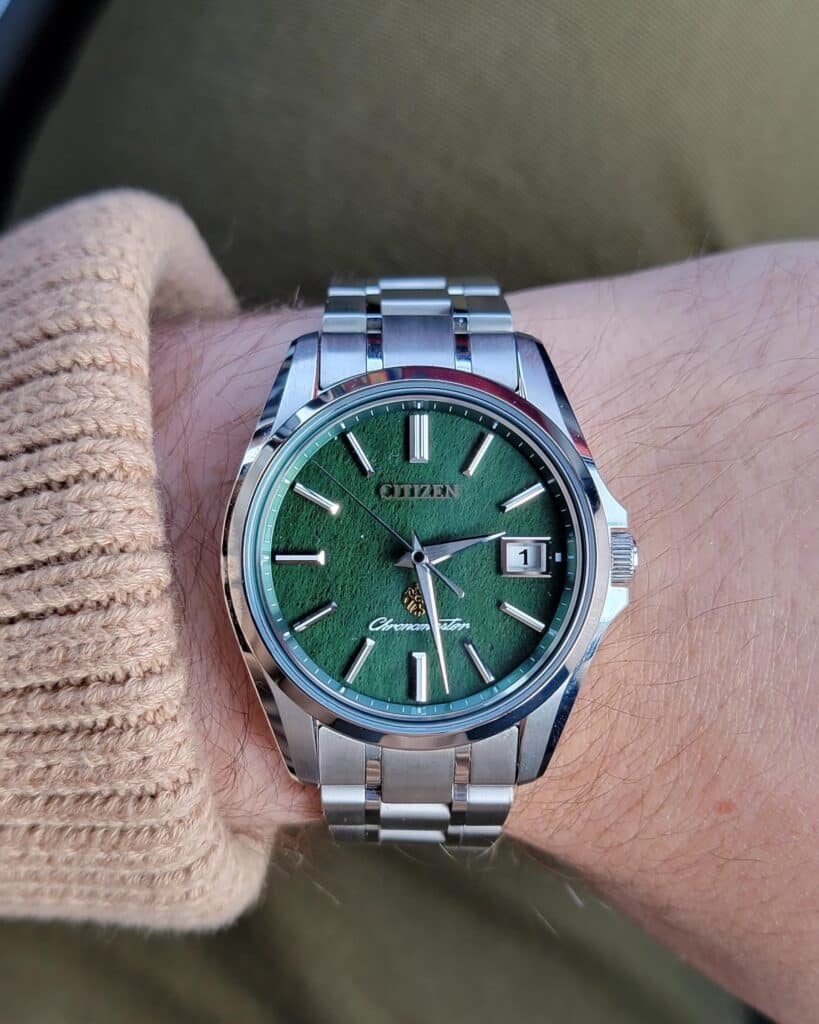
My Own History with HAQ
Despite the great view I have from the top of my high horse, I have to admit I was guilty of this kind of thinking just last year. I was looking for a quartz watch to add to my collection, for those days that I didn’t care to wind up one of my mechanical watches. I’ve owned quartz watches before – in 2021 I bought a Citizen Chronomaster model AQ4020- 54X. A high accuracy quartz (HAQ) watch, it was accurate to +/- 5 seconds per year, and had a perpetual calendar function. I spent the two years previous to that searching for this particular model on eBay, and when one finally came up for auction I pounced on it. Just one year later, in 2022 I sold it.
Why? In short, it was too perfect. I could have worn that watch every day and never thought about buying another watch again. As a certified addict I couldn’t have that. Given the inevitability that it would sit in my watch box as part of a rotation of watches, I decided that it needed a better home. That’s why I sold it to my brother, who after I listed off all of the watch’s features (Eco-Drive, absurd accuracy, washi paper dial, titanium, zaratsu polishing), simply asked me if that meant it told time good. He has worn that watch every day since he bought it, to include on his wedding day. I feel like I made the right choice on that one. Pearls before swine, some might say, but I would say to those people “hey, you leave that pig alone, that’s my brother!”
Bringing us forward to 2024, I still wanted a quartz watch, but one at a lower price point. There are excellent modern quartz watches at many price points, from both major and boutique brands alike. However, I wanted a HAQ, and knew exactly where to start looking: neo-vintage Longines.
The History of Longines’ Quartz Catalog
Longines is one of my favorite watch brands. They have an extensive history and so many interesting designs that it’s easy to get lost just exploring their back catalog. I have started collecting their old catalogs by year, in fact, just to have physical copies of information on their old models, and see if I can find some unique gems in the future. Longines has extensive experience creating quartz watches. They were technically the first watch brand ever to announce that they had created a quartz wristwatch: the UltraQuartz, announced in 1969. However, the movement required an extensive re-design after the announcement, which delayed production for two years. This enabled other brands to bring more effective watch movements to market, putting Longines at a disadvantage. Ultimately, the movement was considerably more complicated to produce and service than the standard quartz movement, and thus was abandoned.
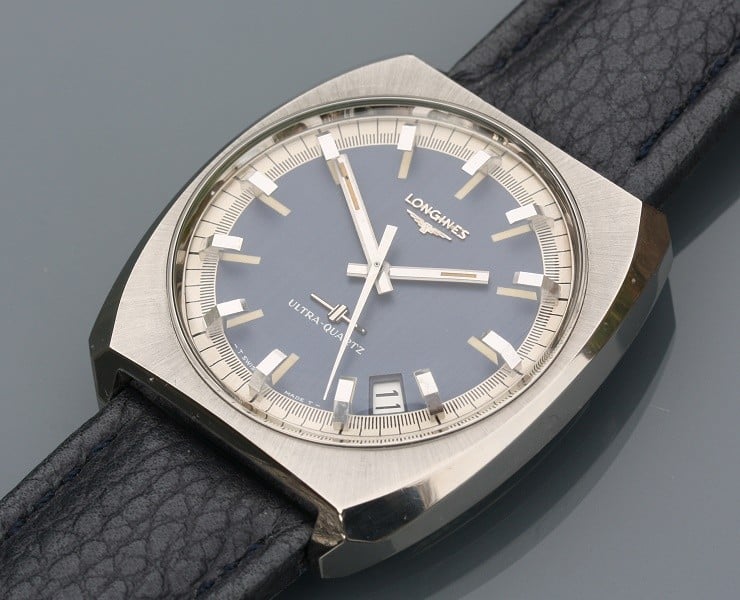
Longines, under the Ebauches SA watch group in 1971, used the ESA 9162 tuning fork movement in their Ultronic line of watches. The ESA 9162 was based on the Bulova Accutron movement design, with some improvements that allowed it to obtain chronometer status. In addition to Longines, Omega used the same movement in its F300hz line. This movement, too, had maintenance issues compared to standard quartz movements, which led to Longines dropping them from its catalog.
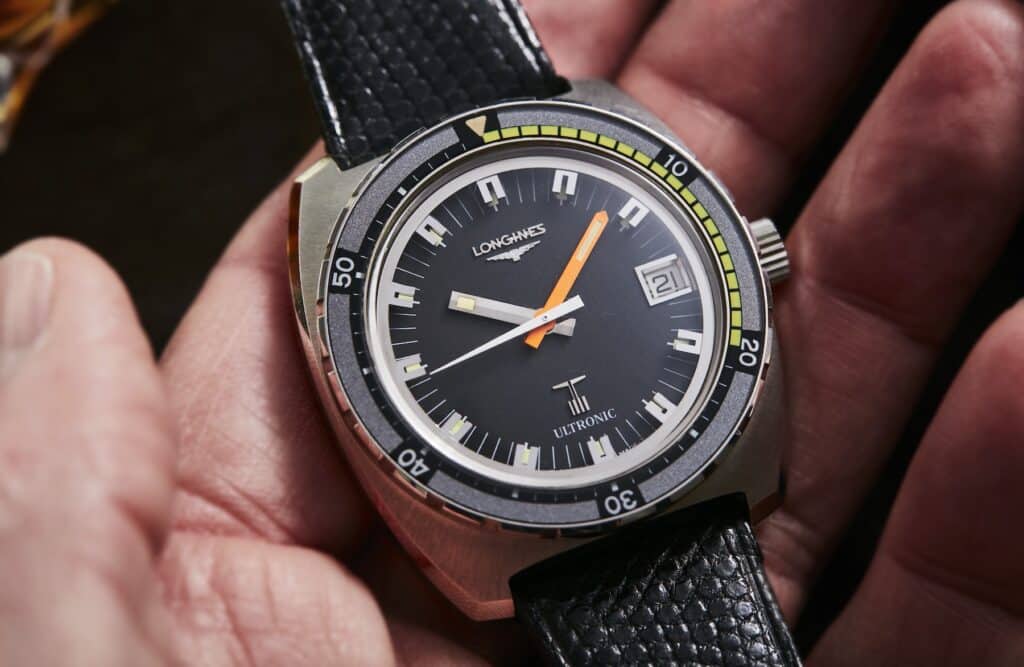
the Bulova Accutron. Photo courtesy of Time and Tide.
Longines eventually switched to using ETA quartz movements. In the 1980s Longines released its Very High Precision, or V.H.P. line. These watches used ETA’s new thermocompensated quartz movements and were accurate to +/- 10 seconds per year. In 1996 Longines added the VHP Perpetual Calendar to the line. This watch used the ETA 252.611 movement, which in addition to the perpetual calendar function, used a larger battery which only requires changing once every ten years. Instead of a quick-set date, the watch features a jumping hour hand, enabling the user to quickly reset their watch should they cross time zones. These movements were also used in Omega’s Constellation line in this same time period. I could not find any videos on how to set the Longines, but this video featuring the Omega Constellation provides accurate instructions on how to set the time, date, and month/year cycle, as it uses the same movement.
These movements, considered some of the best in Longines’ catalog at the time, retailed for $995 to $1195 USD in 1996, which is about $2,000 USD today. This is in line with Longines’ current pricing for its newest iteration of the Conquest models. These are the models I sought out when looking for a new HAQ watch, and it’s these models I would recommend to others to check out.
All of the models listed below can be found in the $300-$700 USD range in good condition on eBay, far less than their original MSRP. I would stay away from anything that is labeled as “untested,” unless they’re selling it for far cheaper, and there’s a photo of the movement itself. It’s one thing if a watch has been sitting in a drawer without a battery for years, and has a slightly deviated accuracy. It’s another if the movement has been corroded by a dead battery, rendering it completely unusable.
The first VHP Perpetual Calendar model reference number is the L1.627.4. The case is more traditionally sized at 35mm across and approximately 8.9mm thick. The dial consists of either a sunburst or flat white dial, with standard sword hands, applied indices, and small lume plots. The integrated bracelet measures 19mm in diameter, has polished center links, and does not taper. The clasp is a friction-fit butterfly clasp. The bezel is thin, with an alternating “pebbled” and polished texture. It size and polish give it a much dressier feel than later models. Its 100m of water resistance, however, denotes its status as a sport watch, though it uses a push/pull crown rather than a screw-down system. Standard L1.627.4 models can be found with white and blue dials in stainless steel, and white and silver dials with a two-tone case.
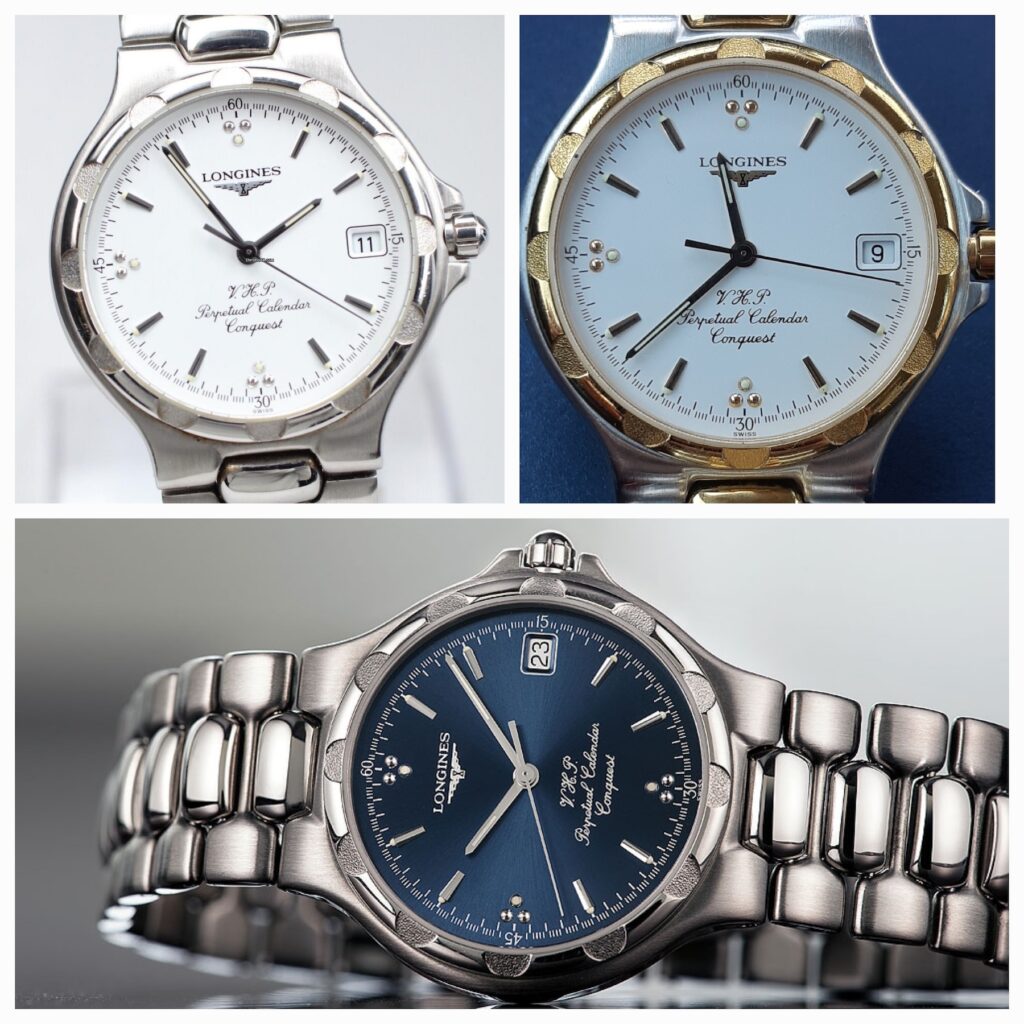
I also found information on a unique Japanese Domestic Market salmon dial variant. Though rarer, they do pop up on auction sites occasionally. I bided my time until I came across a listing for one at a reasonable price, around $400.

Longines released a new version of the Conquest VHP toward the beginning of the millennium – the L1.636.4. This watch has the same movement as the 1996 version, but a higher water resistance at 200m. The case is 37mm in diameter, and about 12mm thick. The bracelet tapers slightly from 20mm to 18.5mm at the friction-fit butterfly clasp. The black dial variant has an inky, enamel quality to it that makes it difficult to photograph. The handset and indices also updated, with a skeletonized hour and minute hand, and round applied indices. The lume is slightly better, but not by much. The bezel is wide, and has a gear-like appearance. Because I wanted the less common black dial variant, I waited patiently for one to come onto the market at a price I found reasonable. I ended up paying $167 USD for a listing that stated the watch was “broken,” but which began working normally as soon as I put a battery inside. I have had no issues with it since.
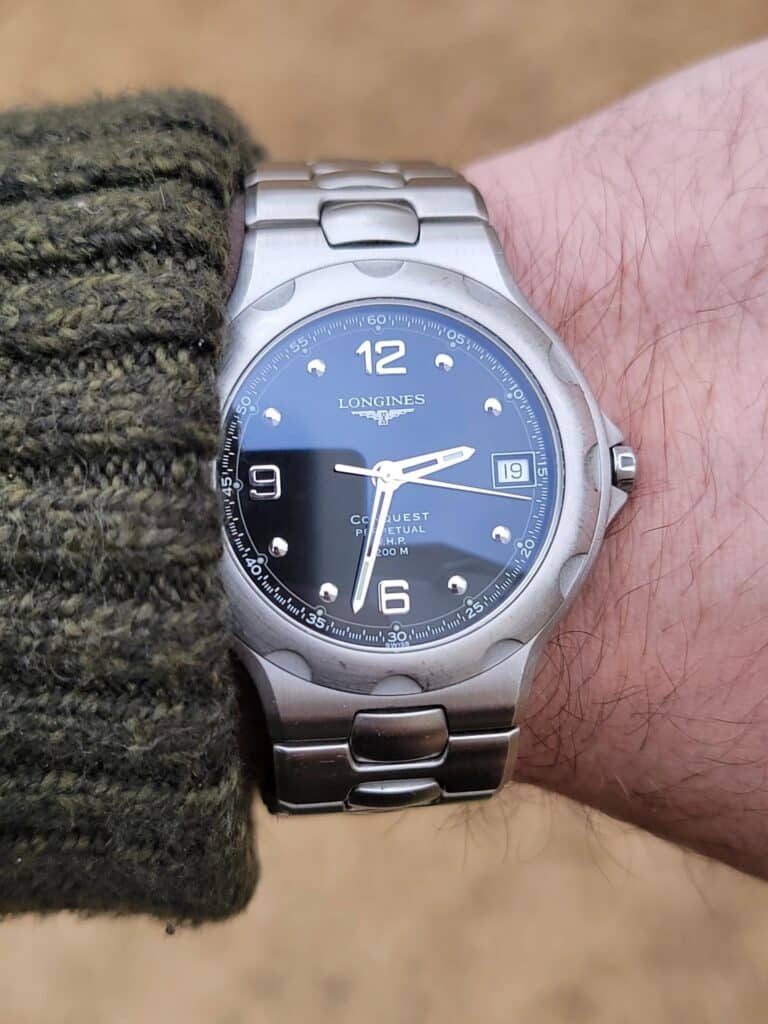
The L1.636.4 (37mm) conquest can be found with white, black, and blue dials. There are several PVD gold versions as well.
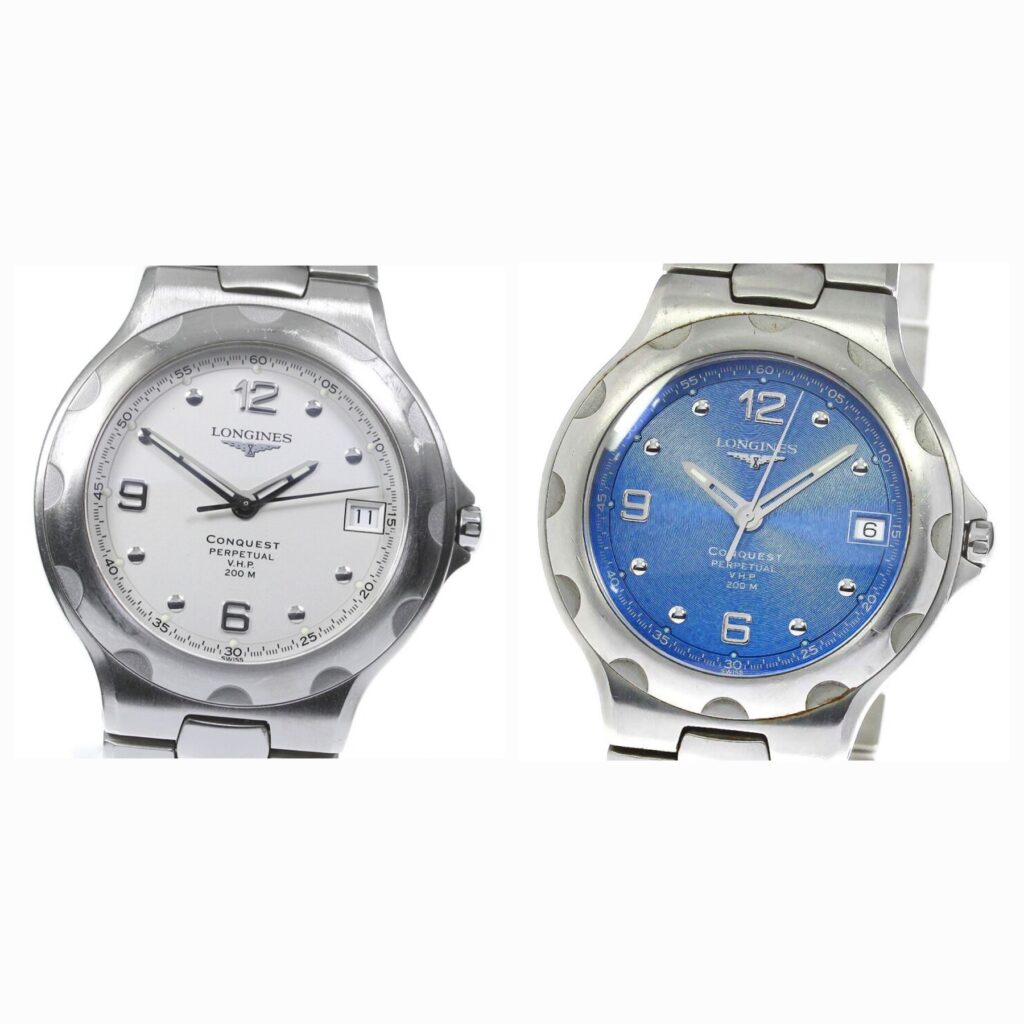
There are also several later variations which I have not seen in person, the L1.639.4 series. These models have the same case design as the L1.636.4, but the dials are closer to the next iteration of conquest models, with just the “12” Arabic numeral and surrounded by rectangular indices.
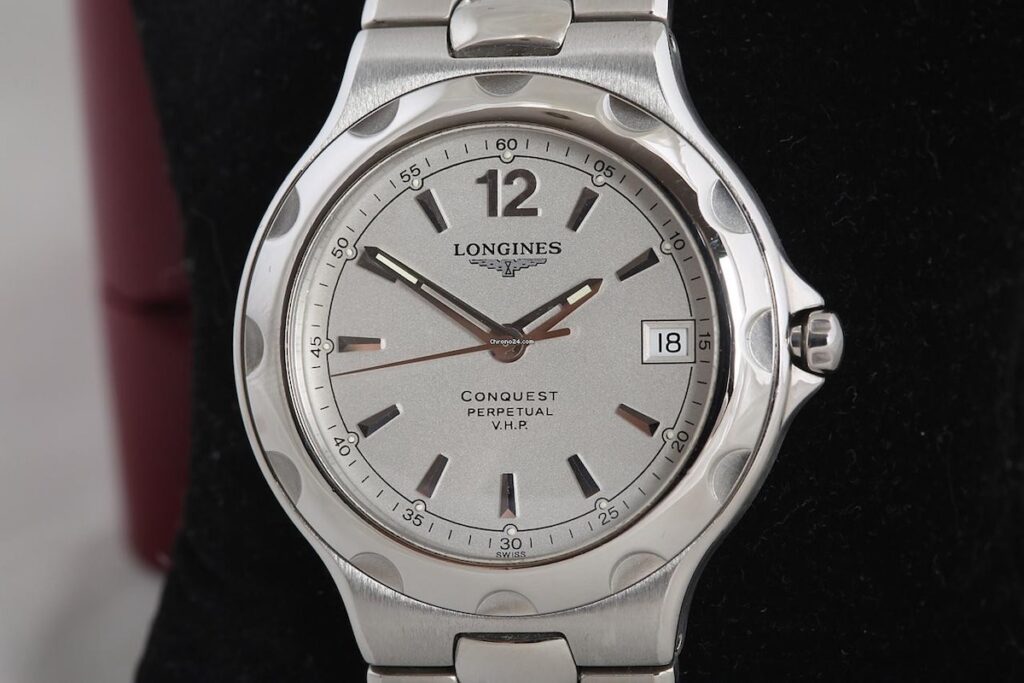
Lastly, Longines also used the ETA 252.611 movement in its Flagship Line. The model, L4.722.4, came in a variety of dial designs. The watch measures 36mm in diameter and is 9mm thick. Its water resistance rating is only 30m, befitting its status as a dressier watch. The lug width is 19mm.
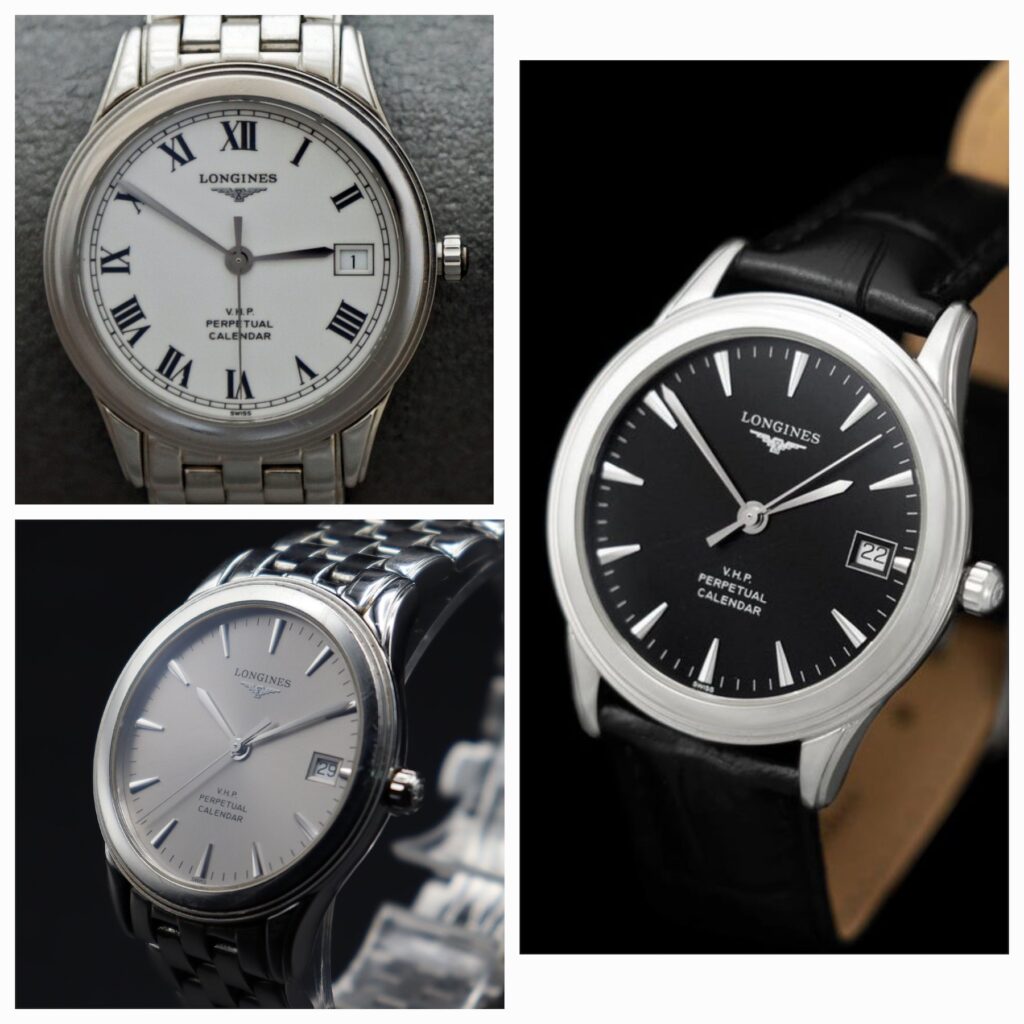
While I initially purchased these watches as a “quirky” addition to the collection, they quickly became my go-to watches for much of the year. Out of the dozen or so watches I own, the two VHPs I purchased took up 25% of my wear time over the course of last year. They looked good, they were easy to just put on and go, and if I didn’t wear one for a little while, I didn’t feel as guilty as I did with the more refined and expensive Citizen Chronomaster. They provide an excellent set of functions that you’d have difficulty finding among sub-$1000 USD quartz watches.
Longines discontinued the VHP line in the late 2000s, only to bring it back with a new movement in 2017. These new models were accurate to +/- 5 seconds per year, and came with a perpetual calendar function as well. The case sizes are larger at 41-43mm, however, with only a white-face dial and a mother-of-pearl dial with diamond indices in a 36mm case size. Moreover, they only have 50m of water resistance, compared to the 100m of the older case designs. They also developed chronograph and GMT VHP movements, both approximately the same case size. This line was officially discontinued just a few years ago, around the same time that Longines released its new, updated Conquest models.
I would like to make the case for the return of the VHP. Simply put, there are some people out there who want a nice watch, but don’t care for the mechanical aspect of it. My brother is one of them. My sister is another, who said she wanted a watch, and then I got her a watch, and now every time I see her asks me to reset the time on her watch, because she’s tired of doing so herself. I think there’s a gap in the market for a nice, “everyday” HAQ watch. Grand Seiko is the only competitor which falls in the same price category, with its SBGX261 and SBGX263 models priced at $2,300 USD. However, there are no Swiss models at this price point that can offer the same features as Longines’ VHP line. Whether they choose to use the older ETA 252.611 based movement, or the newer VHP movement, Longines can offer both better accuracy and features than Grand Seiko can. And if I can keep dreaming here, I would argue that the movement should not simply be put into a preexisting case and dial. Rather, it should stand apart as a separate line, with its own design. As Longines regularly digs into its archives for inspiration, I think it should look at the VHP as an opportunity to re-create its very first attempts at quartz watchmaking: the Ultra-Quartz and Ultronic watches.
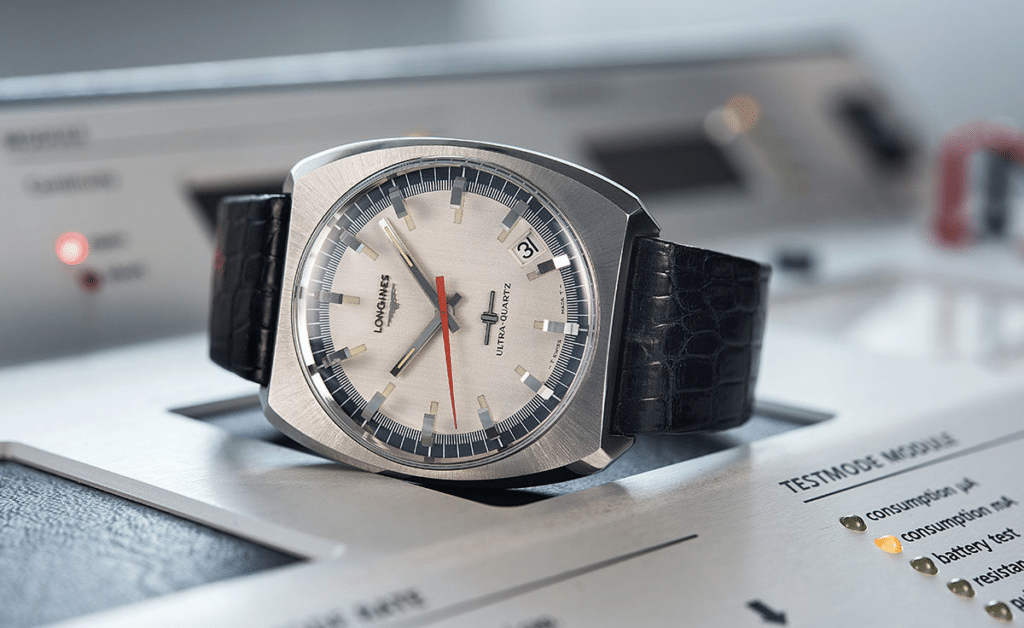
When I started collecting watches as a hobby, quartz watches were boring to me because they seemed like a transitional device between romanticized mechanical movements and the more accurate, functional digital displays in use today in smart devices, phones, and Bluetooth connected G-shocks. The idea of a “grab and go” quartz watch didn’t really appeal to me, because I thought I’d never get tired of setting and winding my watch every morning. Well guess what, I did; there are some days you wake up, don’t care about mechanical timekeeping, and a G-shock just doesn’t cover it. Mechanical watches have in recent years made something of a comeback; not just because of personal style choices, but because of a renewed interest in analog devices as a whole. HAQ watches can once again fill the gap between those that want something stylish and analog, but want to effectively “set it and forget it.”
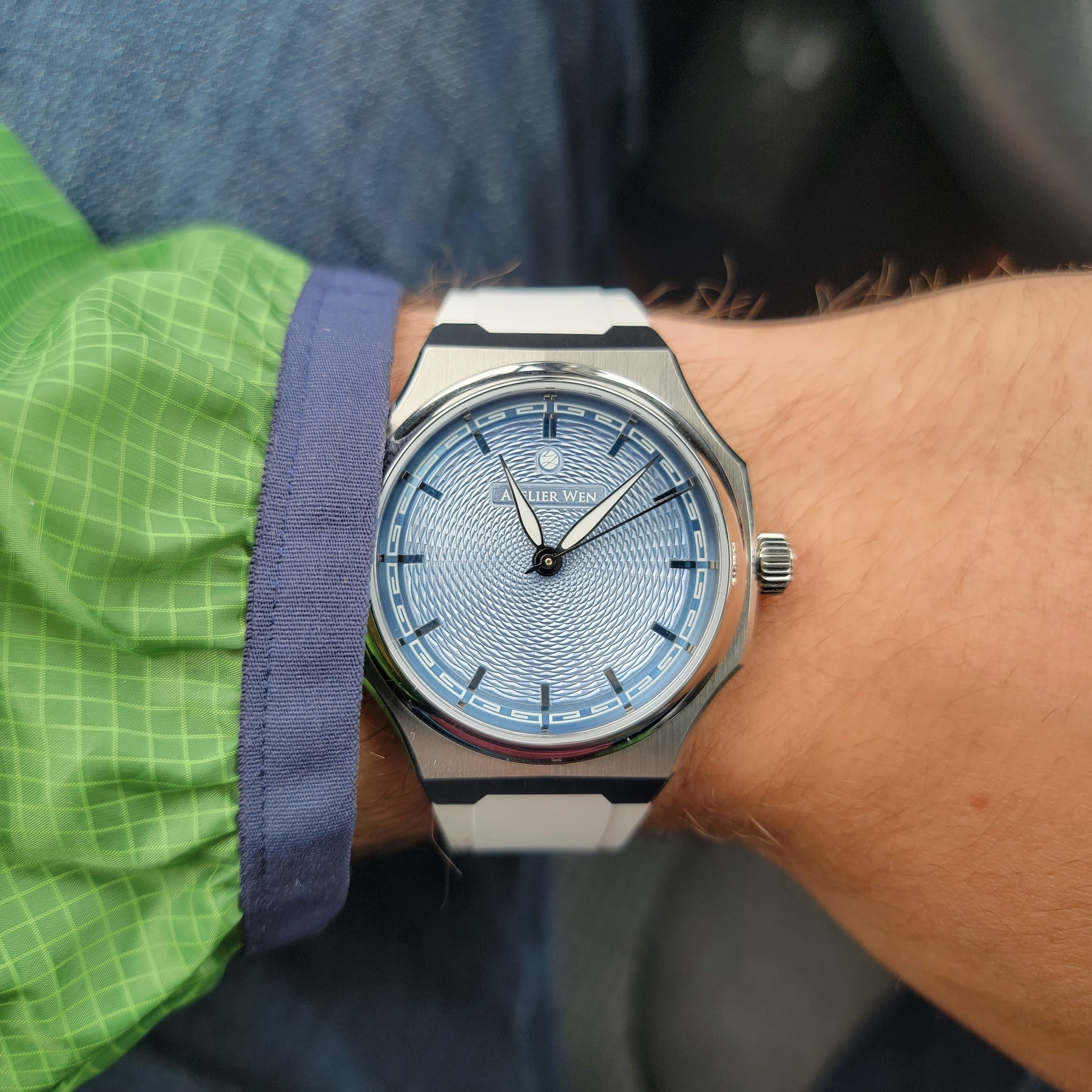
John began collecting watches in 2018, when he realized that the hobby meshed well with his love of studying history and researching obscure topics. In addition to watches, John enjoys collecting fountain pens, learning languages, reading, and traveling.
